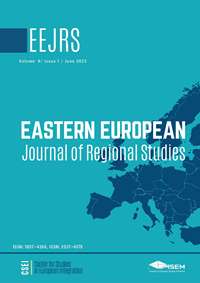WICKED PROBLEMS AND THE DESIGN THINKING METHOD AS A TOOL TO SOLVE THESE PROBLEMS. THE CASE ALIEN PROJECT
WICKED PROBLEMS AND THE DESIGN THINKING METHOD AS A TOOL TO SOLVE THESE PROBLEMS. THE CASE ALIEN PROJECT
Author(s): Magdalena Proczek, Marta GarbarczykSubject(s): Migration Studies, Inter-Ethnic Relations, Socio-Economic Research, Asylum, Refugees, Migration as Policy-fields
Published by: Center for Studies in European Integration, Academy of Economic Studies of Moldova
Keywords: wicked problems; migration; refugee; Design Thinking; UNHCR;
Summary/Abstract: Today's global challenges are characterized by increasing complexity. This makes it possible to call these challenges so-called wicked problems, which are difficult to define clearly, have no single solution and require the involvement of multiple stakeholders for its purpose. Such complication can include a group of contemporary migration and refugee problems, which include dilemma of adaptation and integration of immigrants, or social conflicts between locals and newcomers, etc. The Design Thinking (DT) method, which is recipient- and user-oriented solution, can be used to try to solve these issues. Importantly, the beneficiaries themselves can also be involved. The purpose of this study is to present the essence of wicked problems, as well as the DT method as a tool for solving contemporary problems, including migration and refugees. The study fills the research gap on presenting a proposal for a tool in the form of the Design Thinking method for solving contemporary wicked problems, including in the setting of migrants and refugees, using the results of the ALIEN project as an example. A synthetic review of the literature on wicked problems was also conducted. The study used a qualitative method in the form of logical inference, as well as a review of the literature on the subject, studies, and reports. By addressing this issue, the authors intended to expand the existing body of global analysis in this area. As demonstrated in this paper, the DT method has been successfully used to solve wicked problems among migrants and refugees in Norway as well as Ethiopia, Senegal, USA, Colombia, Australia, France, Germany, Greece, Jordan and Iraq. International research teams, including the ALIEN project team, are seeking effective solutions to wicked problems accompanying migration and refugee processes. This empirical study discusses the application of this method to solving wicked problems surrounding migrants and refugees, especially their solution proposals developed within the ERASMUS+ ALIEN Strategic Partnerships project. The authors believe that they could be successfully used today on a large scale.
Journal: Eastern European Journal for Regional Studies (EEJRS)
- Issue Year: 9/2023
- Issue No: 1
- Page Range: 21-31
- Page Count: 11
- Language: English

